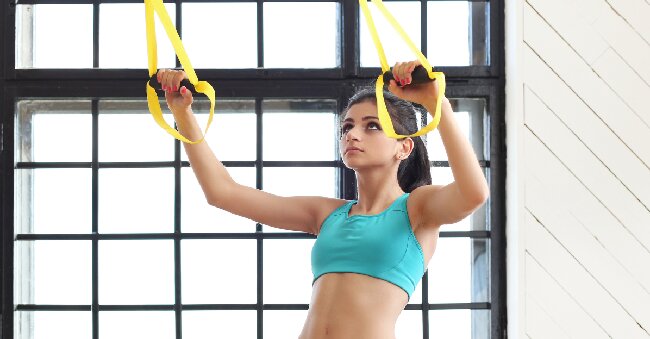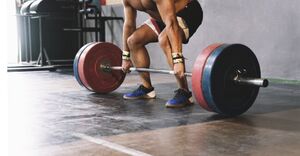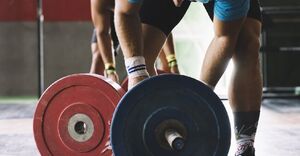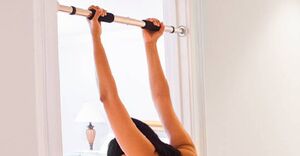
5 Effective Resistance Band Pull Strap Row Exercises for Ultimate Back Strength
Are you interested in improving your back muscles and enhancing your overall fitness level?
Pull strap rows could be the ideal exercise for you. This discussion will delve into the advantages of pull strap rows, the specific muscles they engage, and how they stack up against other back exercises.
Additionally, we will offer a detailed walkthrough on executing pull strap rows accurately, along with different variations to add variety to your workouts.
Discover how to include pull strap rows in your exercise regimen and the crucial safety measures to bear in mind.
What Are Pull Strap Rows?
Mastering Pull Strap Rows is important for developing strong back muscles. Pull Strap Rows target back muscles like the latissimus dorsi, rhomboids, and traps, which can help improve posture and overall upper body strength. By becoming proficient in this exercise, individuals can enhance their pulling strength, as well as increase muscle endurance and stability.
Pull Strap Rows are a versatile exercise that can be easily included in various workout programs, whether the focus is on strength training, muscle building, or overall fitness. Adding Pull Strap Rows to a routine can result in enhanced functional strength, improved body mechanics, and a reduced risk of back injuries.
How Do Pull Strap Rows Benefit Your Back Strength?
Pull Strap Rows are a versatile option for improving back strength as they activate multiple muscle groups simultaneously. Adding Pull Strap Rows to your workout routine can result in notable enhancements in overall back strength and endurance.
This exercise targets the primary muscles of the upper and middle back while also involving the biceps, forearms, and core for stability. With pull straps, you can easily adjust the resistance levels to suit your fitness level, accommodating both beginners and advanced athletes.
The controlled pulling movement in Pull Strap Rows contributes to developing proper posture and spinal alignment, thereby reducing the risk of back injuries. The dynamic nature of this exercise helps improve muscular endurance, enabling you to sustain physical activities for extended periods.
What Muscles Do Pull Strap Rows Target?
Pull Strap Rows engage a variety of muscles in the upper body, including the Latissimus Dorsi, Rhomboids, Trapezius, Deltoids, Biceps, and Forearms. Activation of these muscles during Pull Strap Rows contributes to building strength and stability in the back, shoulders, and arms.
Focusing on the Latissimus Dorsi, commonly known as the lats, Pull Strap Rows are effective for enhancing the width and overall strength of the back. The Rhomboids and Trapezius muscles are essential for scapular retraction and stability, crucial for maintaining proper posture and upper body function. Engagement of the Deltoids aids in improving shoulder strength and stability, leading to enhanced shoulder mobility and reduced risk of injury. The Biceps and Forearms also come into play during Pull Strap Rows, aiding in grip strength and forearm development to facilitate a comprehensive upper body workout.
How Do Pull Strap Rows Compare to Other Back Exercises?
Pull Strap Rows provide a unique advantage over other back exercises by offering a challenging yet versatile workout that combines elements of strength training and resistance band exercises. Unlike traditional gym equipment, Pull Strap Rows require greater control and balance, making them an effective choice for functional fitness and full-body workouts.
Incorporating resistance bands into the workout engages stabilizing muscles with Pull Strap Rows, leading to improved core strength and overall body stability. This dynamic form of training targets not only the back muscles but also activates the arms, shoulders, and core, providing a comprehensive upper-body workout. The adjustable nature of resistance band exercises allows for progressive overload, making it suitable for individuals of varying fitness levels to continuously challenge themselves and see noticeable improvements in strength and muscle tone.
How To Perform Pull Strap Rows?
Understanding the proper technique and form of Pull Strap Rows is important to get the most out of this exercise. Focus on your grip strength, maintain correct form during each repetition, and aim to complete the recommended number of sets to ensure a challenging and effective workout.
To execute Pull Strap Rows accurately, begin by securing the straps at a suitable height above you. Stand facing the anchor point with your arms extended in front of you, holding the handles with palms facing each other. Engage your core, keep your back straight, and retract your shoulder blades as you pull yourself up towards the straps.
Try to pull your elbows back and squeeze your shoulder blades together at the peak of the movement. Experiment with different grip variations to target different muscles and add variety to your routine. Make sure to control the pulling motion during both the concentric and eccentric phases for optimal muscle engagement.
What Equipment Do You Need for Pull Strap Rows?
To perform Pull Strap Rows, minimal equipment such as resistance bands or a suspension trainer is required. These tools provide the required resistance to effectively challenge the muscles and can be easily adjusted to suit various fitness levels.
Resistance bands are beneficial for incorporating variable resistance, giving you control over the workout’s intensity. They maintain smooth, constant tension throughout the movement, targeting specific muscle groups effectively. On the other hand, suspension trainers like TRX improve stability and engage the core while performing Pull Strap Rows. The flexibility of these tools allows for a wide range of exercises beyond just rows, making them a valuable addition to both home and gym workout routines.
Step-by-Step Guide to Performing Pull Strap Rows
- These step-by-step instructions can help one master the technique of Pull Strap Rows effectively.
- Begin by engaging the back muscles and contracting them while pulling. Expand and contract the arms, maintaining proper form with each repetition.
- To ensure stability, maintain a solid stance with feet hip-width apart and slightly bent knees. Tighten the core to stabilize the body during the movement.
- While pulling the straps towards the body, focus on squeezing the shoulder blades together to fully engage the upper back muscles. Keep the motion smooth and controlled, avoiding jerky or swinging movements.
- Remember to exhale during the pull and inhale upon release, coordinating breath with movement for optimal efficiency and muscle activation.
- Following these detailed steps can help in performing Pull Strap Rows accurately and effectively.
Common Mistakes to Avoid When Doing Pull Strap Rows
Avoiding common mistakes is important when performing Pull Strap Rows to prevent injury and maximize the effectiveness of the exercise. Errors such as incorrect form, overextending, and using excessive momentum can be mitigated through proper technique and corrective exercises.
It is crucial to maintain a stable core and avoid overarching of the back during the rowing motion. The shoulders should be relaxed and not hunched up towards the ears to prevent undue strain. Engaging the back muscles fully and avoiding pulling with the arms alone is essential.
Remember to control the movement throughout the entire range of motion, resisting the temptation to rush through the exercise. By focusing on these key areas, the risk of injury can be reduced, and the quality of Pull Strap Rows can be improved for better results.
What Are the Variations of Pull Strap Rows?
Experiment with different versions of Pull Strap Rows to diversify your workout routine and target various muscle groups. Including variations like single-arm rows and wide grip options can help enhance grip strength, stability, and overall workout performance.
Certain variations are designed to intensify the engagement of specific muscle groups, such as the close grip pull strap row that focuses on the mid-back and biceps. By altering your grip width and hand placement, you can shift the focus to different muscle regions, ensuring a comprehensive workout. Introducing instability elements, like conducting pull strap rows on a stability ball or with one foot raised, can further activate the core muscles and improve balance. Gradually progressing to more demanding variations not only builds strength but also maintains the excitement and effectiveness of your workouts.
1. Single Arm Pull Strap Rows
Single Arm Pull Strap Rows are an advanced variation that focuses on unilateral strength, grip control, and balance. By engaging one arm at a time, individuals can challenge their core stability and enhance overall muscle coordination.
This exercise helps in isolating each side of the body, allowing individuals to address any muscle imbalances. The emphasis on grip strength is crucial as it not only aids in pulling the strap but also improves overall hand dexterity. The need for control and balance during Single Arm Pull Strap Rows forces the stabilizing muscles to work harder, resulting in a more functional strength.
Mastering this technique can translate into improved performance in various daily activities requiring unilateral movements.
2. Wide Grip Pull Strap Rows
Wide Grip Pull Strap Rows target the back muscles from a different angle, emphasizing power and muscle squeeze. By holding a wider grip, you engage additional muscle fibers and challenge your strength and endurance effectively. This exercise variation requires a strong core to stabilize your body throughout the movement, leading to improved overall stability.
Squeezing the scapulae together at the top of the movement not only enhances activation in the rhomboids and lats but also helps in developing better posture. The controlled motion of pulling the straps towards your body stimulates the muscles in a unique way, enhancing muscle recruitment and promoting muscular endurance.
Incorporating wide grip pull strap rows into your workout routine can be a game-changer for achieving a stronger and more defined back.
3. Inverted Pull Strap Rows
The Inverted Pull Strap Rows introduce a core stability challenge through a change in body angle. This technique involves activating the core muscles to uphold proper form while pulling the body weight toward the straps.
By modifying the body angle, individuals can target specific muscle groups like the latissimus dorsi, rhomboids, and rear deltoids effectively. Decreasing the body angle places more focus on the upper back muscles, resulting in increased strength and muscle activation.
This progressive adjustment enables a gradual escalation in difficulty, making it a valuable tool for those aiming to elevate their overall performance and endurance levels.
How To Incorporate Pull Strap Rows Into Your Workout Routine?
Improve workout routines by adding Pull Strap Rows as a challenging exercise that can enhance progression and promote fitness gains. Including Pull Strap Rows in a routine can introduce a new level of challenge and variety to a fitness journey, supporting overall strength and development.
As Pull Strap Rows are integrated, individuals engage key muscle groups and foster functional strength and stability. By adjusting the intensity and grip positions in Pull Strap Rows, the exercise can be customized to the current fitness level and gradually increased in difficulty to continue pushing limits. This ongoing challenge to muscles is crucial for continual growth and improvement, resulting in enhanced strength gains over time. Thoughtfully incorporating Pull Strap Rows can help to maintain motivation and observe tangible progress in a fitness journey.
Sample Workout Plan Using Pull Strap Rows
A workout plan incorporating Pull Strap Rows may consist of sets with varying repetitions, rest intervals between sets, and appropriate warm-up and cool-down routines. Strategically include Pull Strap Rows in the workout plan to optimize muscle engagement and performance.
For a complete routine, begin with a dynamic warm-up to enhance blood circulation and flexibility, preparing the body for the workout. Start the Pull Strap Rows exercise with a moderate weight that allows for 3 sets of 12 repetitions each, with a 60-second rest between sets. Focus on maintaining proper form during each repetition to effectively target the intended muscle groups.
After the workout, participate in a cooldown session that includes stretching exercises to facilitate muscle recovery and minimize post-workout soreness.
Tips for Progressing in Pull Strap Rows
To advance in Pull Strap Rows, individuals should consider progressing to more challenging variations, increasing resistance levels, and paying attention to form and technique. Gradually moving towards a higher level can improve overall performance and strength gains.
Transitioning to more advanced versions of Pull Strap Rows, such as single-arm rows or explosive rows, can target different muscle groups and introduce complexity to the exercise routine. By adjusting resistance levels through body positioning or adding extra weight, individuals can intensify the workout and promote muscle growth.
Emphasizing proper form and technique is essential to prevent injuries and ensure optimal muscle engagement, resulting in ongoing enhancements in strength and endurance. Progressing in Pull Strap Rows not only aids in achieving fitness objectives but also contributes to overall strength development and physical performance.
What Are the Safety Precautions for Pull Strap Rows?
When performing Pull Strap Rows, it is important to prioritize safety by maintaining control, balance, and proper form throughout the exercise. Emphasize injury prevention through mindful execution and avoid overexertion to ensure a safe and effective workout experience.
This exercise, which targets the back muscles, can provide significant benefits when performed correctly. To minimize the risk of injury, it is essential to engage the core muscles and maintain a neutral spine throughout the movement. Consistent pacing and avoiding sudden movements are crucial in preventing strains or sprains. Remember, the focus should be on quality rather than quantity when performing the exercise. By incorporating these safety measures, individuals can protect their long-term fitness goals and overall well-being.
external resources:




No Comments